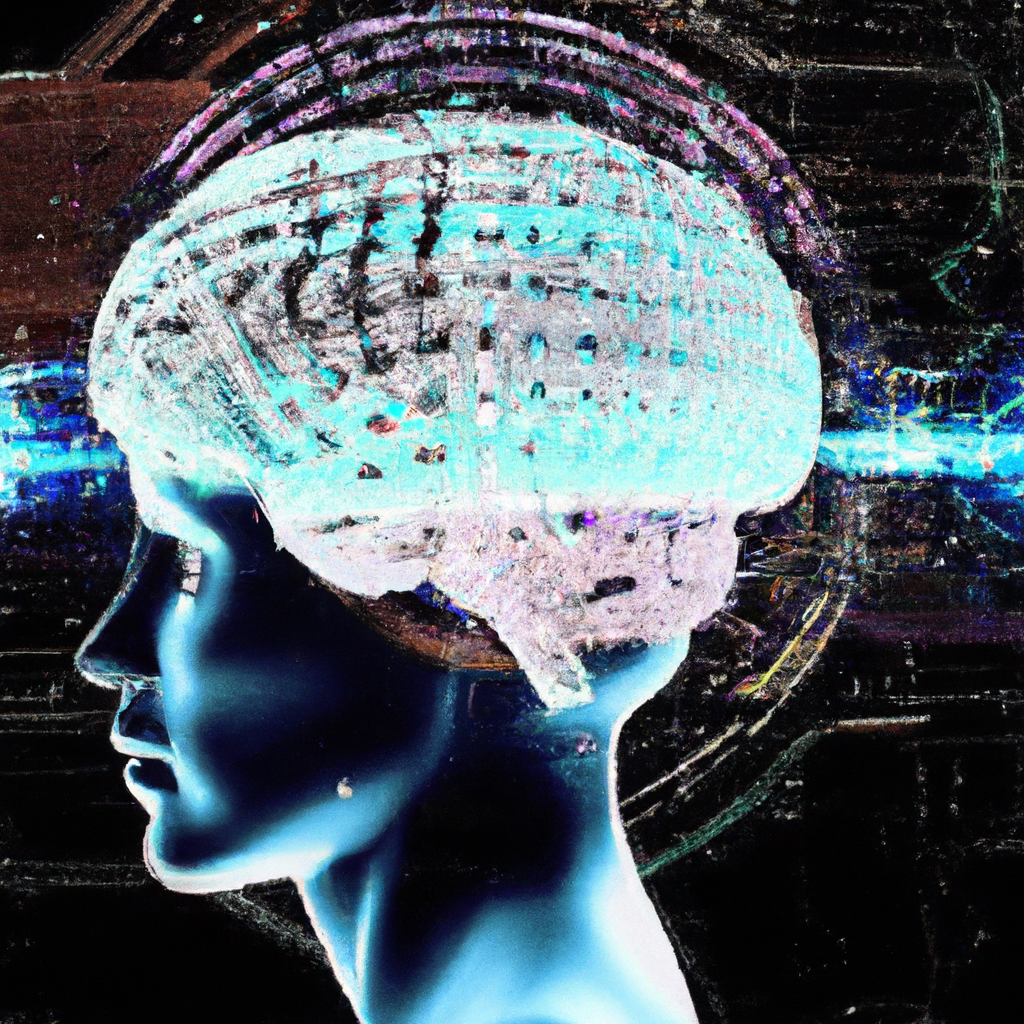The Potential Of AI To Solve Global Problems

Imagine a world where machines can not only assist us with everyday tasks, but also tackle some of the most pressing global challenges. This is not a far-fetched idea; it’s the potential of AI. From climate change and poverty to healthcare and education, artificial intelligence holds immense promise in revolutionizing the way we address and overcome these issues. By leveraging the power of data, algorithms, and advanced analytics, AI has the potential to transform our approach to problem-solving and create a brighter future for all. In this article, we will explore the incredible potential of AI to solve global problems and how this technology can shape a better world for generations to come.

H2: Health and Medical Solutions
AI has the potential to revolutionize the field of healthcare and contribute to disease diagnosis and treatment in remarkable ways. With the ability to analyze vast amounts of medical data quickly and accurately, AI can help doctors make more accurate diagnoses and develop effective treatment plans. By using algorithms to detect patterns and anomalies in medical images, AI can aid in the early detection of diseases such as cancer, increasing the chances of successful treatment. Additionally, AI can assist in drug discovery and development by analyzing molecular structures and predicting the effectiveness of potential drugs.
Precision medicine, a field that focuses on tailoring medical treatments to an individual’s unique genetic makeup, can greatly benefit from AI advancements. By processing genetic information and comparing it to databases of known genetic variations, AI can help determine the most effective treatment options for patients. This personalized approach can lead to improved patient outcomes and reduced healthcare costs.
Furthermore, AI can play a crucial role in preventative healthcare measures. By analyzing data from wearable devices and health records, AI algorithms can identify patterns indicative of potential health risks. This information can then be used to provide personalized recommendations for individuals to maintain or improve their health, ultimately preventing the onset of chronic diseases.
H2: Environmental Solutions
The impact of climate change has become an urgent global concern, and AI can contribute significantly to its mitigation. By analyzing large datasets of climate and environmental information, AI can help scientists develop more accurate models and predictions. This information can then be used to implement proactive measures to reduce greenhouse gas emissions and minimize the impact of climate change on vulnerable ecosystems.
AI can also support natural resource management by monitoring and analyzing data on biodiversity, deforestation, and water resources. By providing real-time insights, AI algorithms can help identify areas of concern and guide conservation efforts. Additionally, AI can aid in pollution control by monitoring air and water quality and identifying the sources of pollution. This information can then be used to develop targeted solutions to reduce pollution levels and protect the environment.
H2: Education and Literacy Enhancements
In the realm of education, AI has the potential to transform the way students learn and teachers teach. Personalized learning, enabled by AI algorithms, allows for tailored educational experiences based on individual strengths, weaknesses, and learning styles. By analyzing student performance data, AI can adapt educational materials and activities to better meet the needs of each student, fostering enhanced learning outcomes.
Language translation and accessibility can also be greatly improved through AI technologies. AI-powered translation tools can break language barriers, allowing for seamless communication and understanding across different cultures. Additionally, AI can enhance accessibility for individuals with disabilities by providing real-time captioning, sign language recognition, and assistive technologies for those with visual or hearing impairments.
Moreover, AI can contribute to quality assessment and feedback in education. By analyzing student work and providing detailed feedback, AI algorithms can help identify areas of improvement and support teachers in delivering targeted instruction. This can lead to more effective teaching practices and improved educational outcomes for students.

H2: Food Security and Agriculture
AI can play a vital role in ensuring food security by optimizing crop yield and enhancing agricultural practices. By analyzing various factors such as soil conditions, weather patterns, and plant health, AI algorithms can provide farmers with valuable insights to optimize irrigation, fertilizer usage, and crop rotation. This precision agriculture approach can maximize crop production while minimizing resource waste and environmental impact.
Additionally, AI can aid in pest and disease detection and control. Through image recognition and data analysis, AI algorithms can identify patterns indicative of pests or diseases affecting crops. This information can help farmers implement targeted interventions and prevent further damage to their crops, ultimately safeguarding food supplies.
H2: Energy Efficiency
AI can contribute to energy efficiency by optimizing energy management systems and forecasting energy demand. Smart grid management, facilitated by AI algorithms, can analyze real-time energy consumption data and adjust energy distribution accordingly. This can help reduce energy waste and improve the reliability and stability of the energy grid.
Furthermore, AI can assist in accurately forecasting energy demand, allowing energy providers to adjust their supply accordingly. By analyzing historical data, weather patterns, and other relevant factors, AI algorithms can predict energy consumption patterns, optimize energy generation, and minimize energy shortages or surpluses.
AI also has the potential to enhance building automation systems. By monitoring and analyzing data on energy usage, occupancy patterns, and environmental conditions, AI algorithms can optimize building operations to reduce energy consumption while maintaining occupants’ comfort levels.
H2: Poverty Alleviation and Economic Development
AI technologies hold the promise of advancing economic development and poverty alleviation efforts. Through job creation and workforce development, AI can help create new opportunities and enhance productivity in various industries. AI-powered automation can streamline repetitive tasks, allowing workers to focus on higher-value activities that require human creativity and problem-solving skills.
Financial inclusion and access to credit can also be improved through AI. By analyzing alternative data sources, such as mobile phone usage patterns and social media activity, AI algorithms can assess creditworthiness for individuals who lack traditional credit histories. This can open up access to financial services and promote economic empowerment for underserved populations.
Moreover, AI can aid in market forecasting and risk assessment, providing valuable insights for businesses and investors. By analyzing vast amounts of data and identifying trends, AI algorithms can help predict market dynamics, assess risks, and inform decision-making processes.
H2: Transportation Enhancements
AI has the potential to revolutionize transportation systems and enhance their efficiency and safety. Autonomous systems and intelligent transportation, powered by AI algorithms, can improve road safety and reduce traffic congestion by optimizing traffic flow and minimizing human errors. Through real-time data analysis and decision-making capabilities, AI can enable vehicles to communicate with each other and adapt to changing traffic conditions.
Traffic management and optimization can also benefit from AI technologies. By analyzing data from various sources, including GPS, traffic cameras, and sensors, AI algorithms can provide real-time traffic updates and suggest optimal routes to drivers. This can significantly reduce travel times and alleviate traffic congestion in busy urban areas.
Furthermore, AI can assist in route planning and navigation, taking into account factors such as traffic conditions, road closures, and user preferences. AI-powered navigation systems can provide customized recommendations, helping individuals reach their destinations efficiently and safely.
H2: Disaster Management
AI can play a crucial role in disaster management by improving early warning systems and facilitating emergency response planning and deployment. By analyzing real-time data from various sources, such as weather sensors, satellite imagery, and social media, AI algorithms can detect and predict natural disasters more accurately. This information can then be used to issue timely warnings and help communities prepare for potential hazards.
During emergencies, AI can aid in coordinating and optimizing emergency response efforts. By analyzing information on available resources, traffic conditions, and the needs of affected areas, AI algorithms can help emergency responders allocate resources more efficiently and prioritize their actions. This can lead to faster and more effective response times, ultimately saving lives and minimizing damages.
Additionally, AI can assist in damage assessment and recovery. By analyzing satellite imagery and other data sources, AI algorithms can rapidly assess the extent of damages caused by disasters. This information can support decision-making processes for targeted recovery efforts and resource allocation.
H2: Social and Humanitarian Issues
AI technologies hold great potential in addressing social and humanitarian issues around the world. Natural language processing for accessibility can enhance communication and information access for individuals with disabilities. AI-powered voice recognition, speech synthesis, and other technologies can bridge communication gaps and provide individuals with disabilities the means to express themselves and access information more independently.
AI can also optimize social services and welfare systems by analyzing data on individual needs, social determinants of health, and service utilization. By identifying patterns and trends, AI algorithms can help governments and organizations allocate resources more effectively and tailor services to the specific needs of individuals and communities.
Furthermore, AI can contribute to conflict resolution and peacekeeping efforts. By analyzing vast amounts of data, including social media content and historical conflict data, AI algorithms can identify potential conflicts and predict their escalation. This information can be used to inform diplomatic efforts, peacekeeping missions, and support conflict resolution initiatives.
H2: Cybersecurity
In an increasingly digital world, AI can be a powerful tool in combating cybersecurity threats. Threat detection and prevention can be significantly enhanced through AI technologies. By analyzing network traffic, user behavior, and other data sources, AI algorithms can identify patterns indicative of malicious activities and alert cybersecurity teams in real-time. This proactive approach can help organizations detect and mitigate cyber threats before they cause significant damages.
AI can also assist in intrusion detection and response. By analyzing system logs and network data, AI algorithms can identify potential unauthorized access attempts and quickly respond to mitigate the impact. This can help organizations maintain the integrity of their systems and protect valuable data and information.
Moreover, data privacy and protection can be improved through AI technologies. By analyzing patterns and anomalies in data access and usage, AI algorithms can identify potential breaches or unauthorized activities, enabling organizations to take appropriate actions to safeguard sensitive information.
In conclusion, AI has the potential to solve global problems in various fields. From healthcare and environmental solutions to education and literacy enhancements, AI technologies offer innovative approaches to address complex challenges. By harnessing the power of AI, we can strive towards a more sustainable and inclusive future for all.






